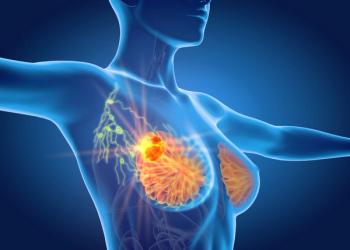
Bone Markers Can Predict Bone-Specific Recurrence in Early Breast Cancer
Several markers of bone formation and resorption were found to be predictive of bone-specific recurrence in patients with early breast cancer.
Several markers of bone formation and resorption were found to be predictive of bone-specific recurrence in patients with early breast cancer, according to a new study.
“Bone metastases ultimately affect more than two-thirds of patients with advanced disease,” wrote study authors led by Janet E. Brown, MD, MSc, of the University of Sheffield in the United Kingdom. “Breast cancer cells can remain dormant for many years in the bone microenvironment, escaping the effects of adjuvant systemic therapies and retaining the potential for future activation and proliferation, resulting in metastasis in bone and/or other distant sites.”
The importance of bone turnover markers has been established in patients in whom bone metastases are already present, but their utility in early disease was not known. In the new analysis, investigators examined three markers in 872 patients included in the AZURE trial, which compared zoledronic acid with standard treatment vs standard treatment alone: one marker of bone formation known as P1NP (N-terminal propeptide of type-1 collagen), and two markers of bone resorption known as CTX (C-telopeptide of type-1 collagen) and 1-CTP (pyridinoline cross-linked carboxy-terminal telopeptide of type-1 collagen). The results were
For P1NP, 27.3% of the cohort had baseline levels above the normal range (> 70 ng/mL). For CTX, 30.0% of patients were above normal (> 0.299 ng/mL), and for 1-CTP, 50.5% were above normal (> 4.2 ng/mL). When the markers were considered as continuous variables, all three were significantly associated with increasing risk of bone recurrence at any time. For P1NP, the log transformed hazard ratio (HR) was 4.11 (95% CI, 1.48–11.36; P = .006). For CTX, the HR was 1.58 (95% CI, 1.12–2.24; P = .009), and for 1-CTP it was 2.18 (95% CI, 1.23–3.88; P = .008). There was no significant association with first distant recurrence at any site, but the association was significant for P1NP and 1-CTP for first recurrence in bone.
Using “high” vs “low” values around the cutoffs for normal range showed that two of the three markers were predictive. Patients with high P1NP at baseline had an adjusted HR for bone recurrence at any time of 1.61 (95% CI, 1.07–2.42; P = .03). For high CTX, the HR was 1.55 (95% CI, 1.05–2.31; P = .03). The association was not significant for high 1-CTP, with an HR of 1.39 (95% CI, 0.94–2.05; P = .10).
The authors noted that the bone marker values increased progressively as menopause progressed in patients, reflecting well-established patterns.
“Bone turnover markers are easily measured and are worthy of additional investigation,” they concluded.
Newsletter
Stay up to date on recent advances in the multidisciplinary approach to cancer.

















































































